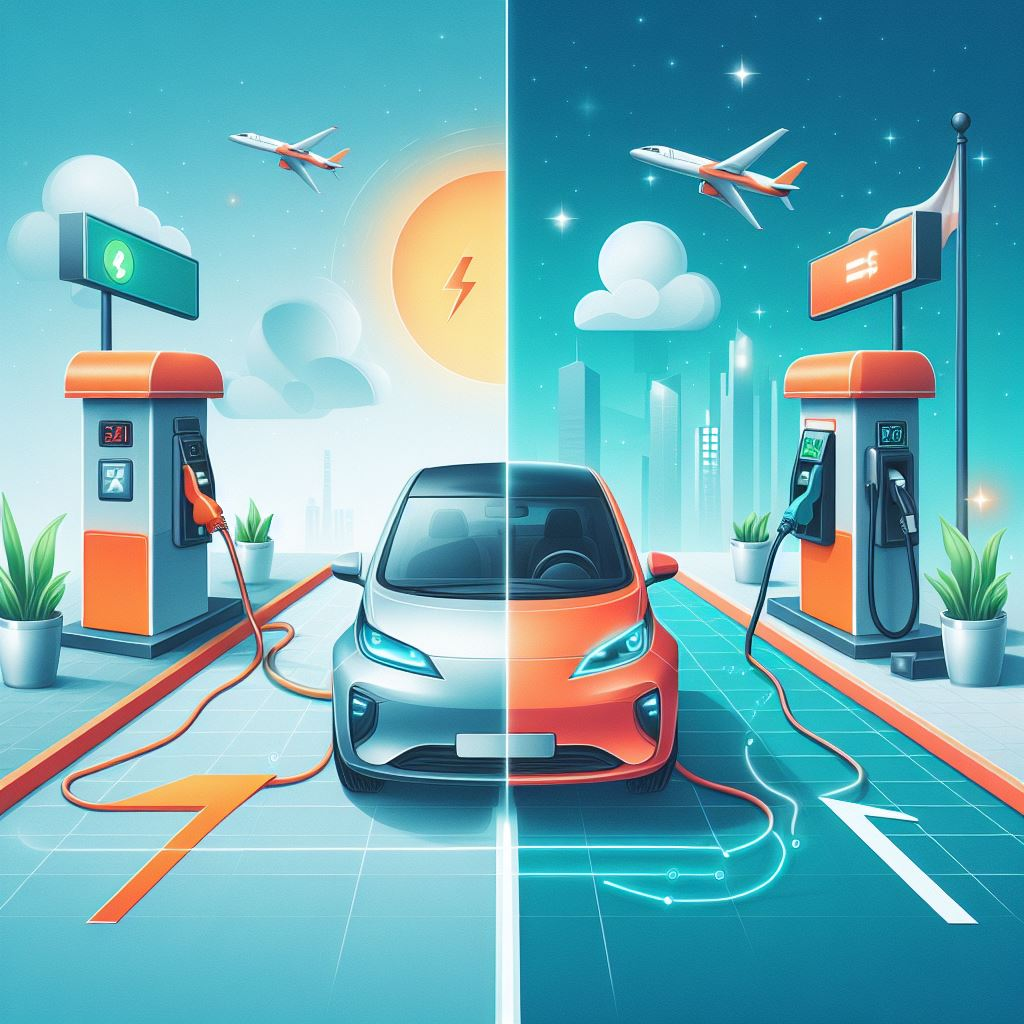
Powering the Drive: Comparing Electric and Internal Combustion Engines
In the dynamic world of automotive technology, two primary power sources dominate the road: electric and internal combustion engines. Each propulsion system has its own set of strengths and weaknesses, impacting factors such as environmental impact, performance, and cost. Let's delve into the key differences between these two engine types to help you make an informed decision about your next vehicle. And of course, AutoDice can help you find that next vehicle with our super simple car configurator.
1. Environmental Impact:
One of the most significant contrasts between electric and internal combustion engines lies in their environmental footprint. Electric vehicles (EVs) produce zero tailpipe emissions, making them a cleaner and greener option compared to traditional gas-powered vehicles. On the other hand, internal combustion engines emit pollutants such as carbon dioxide (CO2), nitrogen oxides (NOx), and particulate matter, contributing to air pollution and climate change.
2. Performance:
When it comes to performance, both electric and internal combustion engines have their own advantages. Electric motors deliver instant torque, providing smooth and responsive acceleration without the need for gear changes. This results in a thrilling driving experience with excellent acceleration and low-end power. In contrast, internal combustion engines offer a familiar driving experience with a wide range of powertrains, including gasoline, diesel, and hybrid options. While traditional engines may have a higher top speed and longer range, electric vehicles are known for their quick acceleration and quiet operation.
3. Fueling and Charging Infrastructure:
Another factor to consider is the fueling and charging infrastructure required for each engine type. Internal combustion engines rely on a network of gas stations, offering convenient access to fuel for long-distance travel. In contrast, electric vehicles require charging stations equipped with electric vehicle supply equipment (EVSE) to recharge their batteries. While charging infrastructure is expanding rapidly, the availability of charging stations may vary depending on your location and travel habits.
4. Cost of Ownership:
The cost of ownership is a crucial consideration for many car buyers. While electric vehicles typically have a higher upfront cost compared to internal combustion engine vehicles, they often offer lower operating costs over time. With fewer moving parts and lower maintenance requirements, EV owners can save money on fuel, maintenance, and repairs. Additionally, incentives such as tax credits and rebates may help offset the initial purchase price of electric vehicles, making them a more affordable option in the long run.
5. Range and Refueling Time:
Range anxiety and refueling time are common concerns for prospective electric vehicle buyers. While internal combustion engine vehicles offer a longer driving range and shorter refueling time compared to electric vehicles, advancements in battery technology are extending the range of EVs and reducing charging times. Additionally, the growing network of fast-charging stations allows EV drivers to recharge their vehicles quickly and conveniently during long trips.
In conclusion, both electric and internal combustion engines have their own advantages and limitations, and the right choice depends on your individual needs, preferences, and lifestyle. Whether you're drawn to the environmental benefits of electric vehicles or the familiarity of internal combustion engines, AutoDice can help you find your next dream car, now matter what it is. Build your dream car today and embark on your next automotive adventure.


Comments